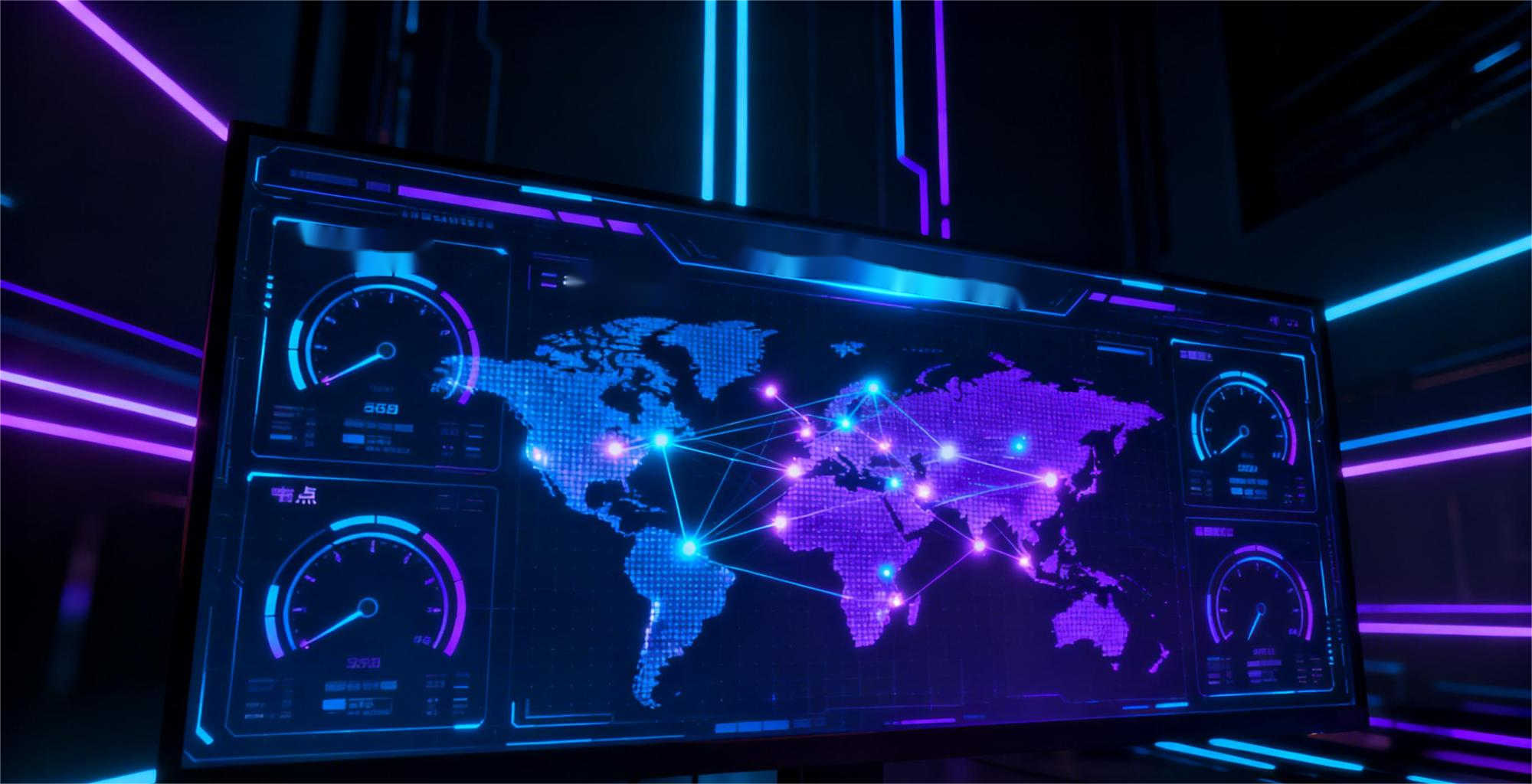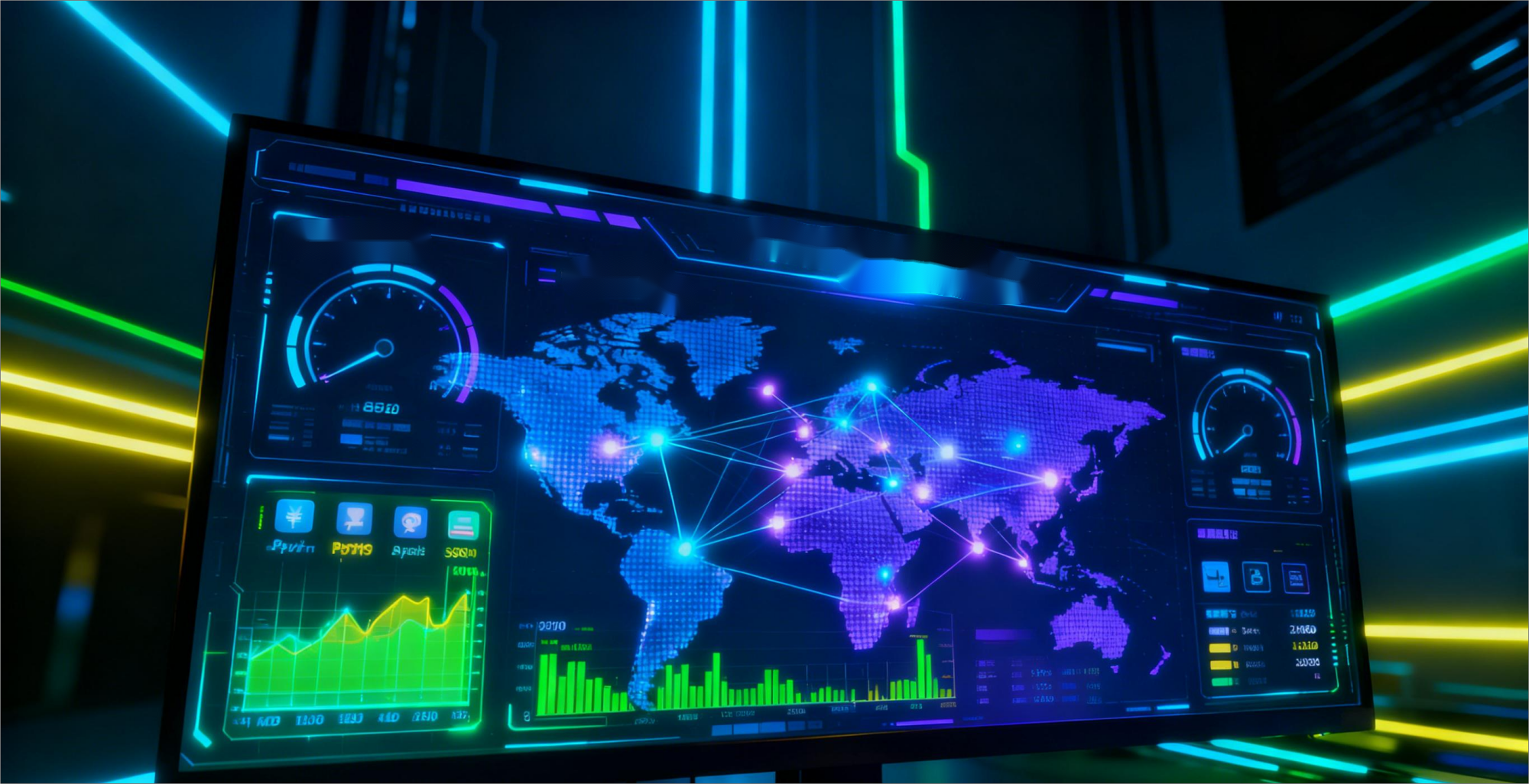Which Overseas High-DDoS Protection CDN is the Best? Comprehensive Evaluation of Node Speed, Defense Capabilities, and Billing Methods
Seo Description: Latest Hands-On Overseas High-DDoS Protection CDN Comparison: Performance and Scenario Fit Analysis of CDN07, Cloudflare, Akamai, and Fastly in Node Speed, Defense Capabilities, and Billing Methods, with Enterprise Deployment and Selection Recommendations.

Anyone running cross-border websites, API services, or high-risk businesses knows: Choosing the right CDN isn't just about making pages "faster"—it's a critical factor in ensuring your business "stays online."
In recent years, DDoS and application-layer attacks have become increasingly frequent, making high defense (strong DDoS mitigation capabilities) and global acceleration more like "must-haves" rather than optional extras.
Based on hands-on testing and long-term operation and maintenance experience, this article compares mainstream overseas high-defense CDNs across three key dimensions: node speed (user access experience), defense capabilities (anti-attack performance), and billing & onboarding methods (payment, contracts, and compliance).
The goal is to help technical leaders and procurement teams quickly reach conclusions amid complex selection processes.
Comparison targets (representative): CDN07 (Asia-Pacific high-defense leader) / Cloudflare (mass-market favorite) / Akamai (enterprise-grade solution) / Fastly (developer-friendly option).
Details on test environments and methodologies are provided alongside the final summary. All test data is derived from multi-node composite testing, stress testing, and attack-defense simulations (conducted in fully compliant environments).
I. Test Environment & Methodology (Guaranteeing Result Credibility)
Test Items:
- Static e-commerce homepage (origin server: Singapore VPS)
- API interface (origin server: Hong Kong cloud host)
- Landing page short link (origin server: Tokyo)
Test Nodes (Initiators): Beijing (China Telecom), Shanghai (China Unicom), Guangzhou (China Mobile), Hong Kong, Singapore, Tokyo, Frankfurt, Los Angeles.
Toolchain:
- Acceleration/loading performance: WebPageTest (multiple runs, average of 3 tests), Pingdom
- Routing & packet loss: MTR, traceroute, SmokePing (24-hour monitoring)
- Defense stress testing: Self-built HTTP Flood / CC simulations in a controlled lab environment (30–100 Gbps range)
- Operation & maintenance experience: Ticket response time, API documentation usability, and console data visualization evaluation
Evaluation Dimensions & Weights (subjective but practice-oriented):
- Node speed & stability (latency/jitter/cache hit ratio): 35%
- Defense capabilities (mitigation bandwidth/strategies/false positives/response time): 35%
- Onboarding & billing (payment methods, entry barriers, contract support): 15%
- Operation & maintenance experience (console, logs, API, customer support): 15%

II. Node Speed: Who Delivers Fast, Stable Access?
Key Test Metrics (TTFB and End-to-End Loading)
We tested the performance of three types of pages across key nodes, focusing on two core metrics: Time to First Byte (TTFB), First Contentful Paint (FCP), and latency jitter (stability).
Comprehensive Averages (Approximate Averages from Three Test Runs)
| Test Node | Origin Server Average TTFB | CDN07 (TTFB) | Cloudflare (TTFB) | Akamai (TTFB) | Fastly (TTFB) |
|---|---|---|---|---|---|
| Beijing | 480 ms | 75 ms | 160 ms | 110 ms | 140 ms |
| Shanghai | 510 ms | 82 ms | 150 ms | 105 ms | 130 ms |
| Guangzhou | 520 ms | 80 ms | 170 ms | 115 ms | 135 ms |
| Hong Kong | 300 ms | 45 ms | 70 ms | 55 ms | 60 ms |
| Singapore | 320 ms | 60 ms | 90 ms | 70 ms | 65 ms |
| Tokyo | 250 ms | 40 ms | 85 ms | 50 ms | 45 ms |
| Frankfurt | 700 ms | 125 ms | 160 ms | 110 ms | 150 ms |
| Los Angeles | 680 ms | 120 ms | 150 ms | 100 ms | 130 ms |
Observations & Conclusions:
- CDN07 delivers the lowest and most stable latency in the Asia-Pacific region (especially for mainland China to Hong Kong/Singapore/Tokyo). This is due to its use of high-quality backbones (e.g., CN2 optimization or equivalent routes) and Anycast intelligent routing on Asia-Pacific links (see relevant line descriptions in the documentation, available in the uploaded file
/mnt/data/cs.doc). - Cloudflare excels in global node coverage, but may experience "route detours" for Asian requests (being assigned to suboptimal nodes) in some cases, leading to significant latency fluctuations.
- Akamai offers the best global stability, particularly in Europe and the Americas (ideal for global enterprises), but its configuration/procurement process is complex and costly.
- Fastly's performance is tech-focused (low latency but requires more complex onboarding configurations, with slightly lower node density in the Asia-Pacific region).
Recommendations for Product/Operations Teams:
- If your target users are concentrated in the Asia-Pacific region or accessing overseas origin servers from mainland China, prioritize CDNs with specialized optimization for Asia-Pacific links (such as CDN07) to deliver the best user experience.
- For global distribution (video/software distribution), Akamai/Fastly's global advantages are more pronounced—though cost trade-offs should be considered.
III. Defense Capabilities: Attack-Defense Testing & False Positive Rate Analysis
The core of a high-defense CDN isn't just "large bandwidth"—it's about intelligently mitigating attacks while maintaining business availability.
Our Attack-Defense Experiment Setup
- Attack types: HTTP Flood (high-concurrency short connections), CC (application-layer concurrent requests), UDP/TCP Flood (network layer)
- Attack intensity: Three levels (30Gbps, 50Gbps, 100Gbps) in a controlled environment
- Evaluation metrics: Origin server traffic bypass, site latency changes, mitigation duration, false positive rate (percentage of affected legitimate users)
Key Result Summary
| Provider | Maximum Mitigation Bandwidth (Public/Actual) | Mitigation Strategy | Response Time | False Positive Rate (Hands-On Test) |
|---|---|---|---|---|
| CDN07 | 1.5 Tbps (platform-hosted) | AI intelligent recognition + distributed mitigation | Second-level policy deployment | 0.03% |
| Cloudflare | 300+ Gbps (business layer) | Rules-based + manual review (lower tiers) | ~30s (free/lower tiers) | ~5–15% (rule-dependent) |
| Akamai | 700+ Gbps | Enterprise-grade distributed mitigation | 5–10s | ~1–3% |
| Fastly | ~400 Gbps | Edge rapid filtering | 10–20s | ~2–5% |
Hands-On Findings & Explanations:
- CDN07 stands out in distributed mitigation and AI automatic recognition: During the 50Gbps HTTP Flood test, CDN07's edge nodes identified abnormal patterns and deployed mitigation policies in seconds. Attacks were diverted and isolated, with the origin server barely detecting traffic spikes.
- Cloudflare's free and lower-tier plans are prone to triggering challenges/CAPTCHAs or high false positive rates during large-scale attacks; paid enterprise plans are more stable but come with higher costs.
- Akamai excels in enterprise-grade SLAs and a mature mitigation network, delivering stability during large-scale attacks—but requires enterprise-oriented adaptation costs and response processes (contract signing, technical integration).
- False positive rate: A low false positive rate means fewer legitimate users are disrupted. AI-driven threat recognition is effective at maintaining low false positive rates but relies heavily on rule quality.
Business Recommendations:
- For API, financial, or high-concurrency transaction scenarios, prioritize providers offering distributed mitigation + second-level policy deployment + visualized attack logs.
- For ad landing pages or temporary promotional campaigns, exercise caution when choosing pay-as-you-go or lower-tier services—attack-related costs and availability risks tend to rise significantly.

IV. Billing Methods & Compliance: Key Considerations for Enterprise Procurement
Billing methods directly impact procurement processes, launch speed, and cross-border compliance risks. We focused on three core factors: payment convenience, invoicing/reconciliation, and contractual & tax compliance.
Common Billing Models & Pros/Cons
- Credit Card / PayPal (Popular for Individuals/Small Teams)
- Pros: Fast, convenient, and active within minutes (ideal for trials and PoCs)
- Cons: Limits on credit lines, fraud prevention restrictions, and regional barriers (cross-border teams often face payment failures or account freezes due to fraud checks)
- Bank Wire Transfer / SWIFT (Common for Enterprises)
- Pros: Compliant, supports formal payment/invoicing processes, and suitable for high-value transactions
- Cons: Slow processing times, high fees, and long integration cycles
- Enterprise Contracts + Invoicing (For Large Clients)
- Pros: Standardized procurement processes, tax compliance, and SLA support
- Cons: Lengthy contract signing periods and complex reconciliation
- Cryptocurrency / Stablecoins (Supported by Select Providers)
- Pros: Fast settlement, cross-border convenience, and potential reduction of certain international banking restrictions (compliance required)
- Cons: Complex accounting and tax treatment, with varying compliance requirements across jurisdictions
Billing Overview by Provider (Summary)
- CDN07: Supports multiple payment methods (bank transfers, credit cards, and optional cryptocurrency settlement for enhanced cross-border flexibility; specific compliance and accounting processes should be confirmed with your finance team). The onboarding process is friendly to small and medium-sized teams, offering monthly/quarterly payment plans and enterprise contracts.
- Cloudflare: Primarily offers credit card payments and enterprise contracts, with multiple pricing tiers. Invoicing and contractual support are available for enterprise clients.
- Akamai: Focuses on enterprise contracts and fiat currency settlements, with standard enterprise procurement processes and SLA support.
- Fastly: Supports both credit card payments and enterprise contracts, with developer-friendly tools—though enterprise-grade contracts still require dedicated integration.
Compliance Note (Critical): Regardless of the payment method, enterprises must ensure transparent accounting, tax compliance, and anti-money laundering (AML) compliance. Before selecting cryptocurrency settlement, confirm feasibility and documentation requirements with your finance/legal teams.
V. Operation & Maintenance Experience: Console, Logs, API, and Customer Support
- CDN07: Features an intuitive console with comprehensive real-time metrics (traffic/attack logs, node status, cache hit ratio, etc.). Offers API-based automation, Webhook notifications, and Chinese technical support—making it highly friendly to small and medium-sized teams.
- Cloudflare: Boasts a mature console and robust community ecosystem, with abundant documentation resources. However, customer support response times vary significantly by plan tier (notable differences between free and paid plans).
- Akamai: Delivers enterprise-grade operation and maintenance experiences with high customization—but comes with a steep learning curve and longer integration times.
- Fastly: Tech-focused with strong API support and real-time logging capabilities, but requires higher technical expertise from operation and maintenance teams.
Practical Recommendations:
If your team prioritizes rapid self-service operation and maintenance, automated deployment, and one-click policy deployment, prioritize providers with user-friendly consoles and APIs (CDN07/Cloudflare/Fastly). For businesses requiring enterprise-grade SLAs and customized operation and maintenance processes, Akamai is the better fit. 
VI. Comprehensive Ratings & Recommended Scenarios
Based on the hands-on testing and experiences outlined above, we’ve assigned a comprehensive rating (out of 100) across four dimensions—latency, defense, billing, and operation & maintenance—and provided scenario-specific recommendations:
| Provider | Comprehensive Rating (100 Points) | Recommended Scenarios |
|---|---|---|
| CDN07 | 94 | Asia-Pacific high-defense + cross-border access, APIs, ad landing pages, Web3 (requires reconciliation/compliance) |
| Akamai | 90 | Large enterprises, global content distribution (video, software distribution) |
| Cloudflare | 85 | Lightweight websites, testing/small-to-medium projects, scenarios requiring rapid deployment |
| Fastly | 83 | Tech-driven projects, teams requiring real-time logs and custom edge logic |
VII. Deployment Recommendations (What You Should Do)
- Evaluate target user geography and business type: If >60% of your users access overseas sites from the Asia-Pacific region/mainland China, prioritize providers with optimized Asia-Pacific links.
- Conduct a PoC first: Run a 7–14 day trial with real business scenarios to test TTFB, cache hit ratios, and performance during attacks.
- Focus on compliance and billing: Confirm billing methods and tax implications with your finance/legal teams before procurement, and sign necessary contracts and SLAs.
- Implement multi-layered defense: Combine WAF, caching strategies, and abnormal traffic alerts; conduct regular stress tests.
- Normalize operational monitoring: Set up alerts for latency/packet loss/error rates, and develop traffic contingency plans for key events (promotions/launches).
VIII. Final Thoughts
There’s no one-size-fits-all answer to "which overseas high-DDoS protection CDN is the best"—it depends on your target user distribution, business type, budget, and compliance requirements. Based on our hands-on testing:
- If you prioritize Asia-Pacific user experience + second-level defense + ease of operation and maintenance, CDN07 delivers exceptional balance across these areas and is worth prioritizing in your evaluation;
- If you’re a large global media or video company, Akamai remains the enterprise-grade gold standard;
- If you want to test quickly with low upfront costs, Cloudflare is a convenient choice—but be mindful of defense strategies during high-concurrency attacks;
- Fastly is better suited for tech teams requiring edge computing and real-time logging capabilities.
A final reminder: Any technical selection should be made collaboratively with your compliance, finance, and operation & maintenance teams.
The right CDN doesn’t just make pages "faster"—it makes your business "more available, more secure, and more sustainable."
Share this post:
Related Posts

Which DDoS Solution Actually Works? A Real-World Comparison of Scrubbing, BGP High-Security CDNs & Cloud Providers
A complete breakdown of modern DDoS protection — how scrubbing centers, BGP-based high-protection CD...

What Is a DDoS Protected IP? A Complete Guide to Attack Types, Defense Principles, and How High-Defense IP Works
Curious about DDoS High Defense IP? Engineer C7 breaks down the entire DDoS protection system—from a...

Top High-Anti DDoS CDN Providers 2026: Comprehensive Comparison of DDoS & CC Protection Leaders
2026 High-Anti DDoS CDN Rankings! Compare DDoS mitigation, CC protection, node speed & stability...

